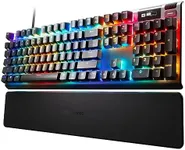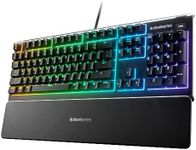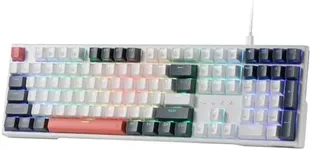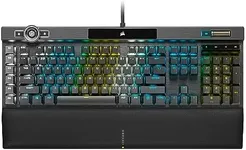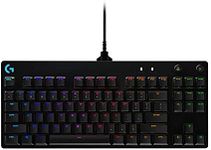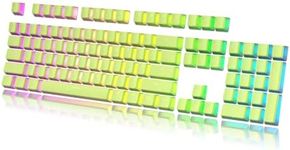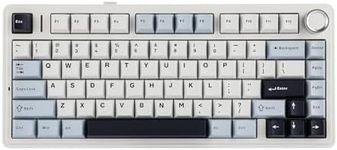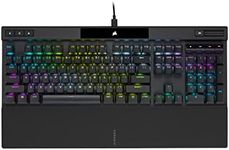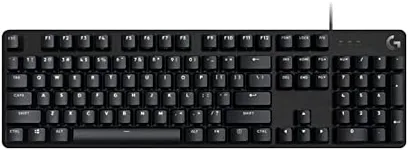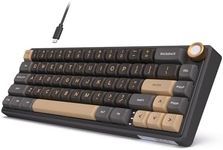Buying Guide for the Best Mechanical Keyboards
Choosing a mechanical keyboard can be a fun and rewarding experience, especially if you spend a lot of time typing or gaming. Mechanical keyboards are known for their durability, satisfying key feel, and customization options. When picking the right one, it's important to think about how you'll use it, what kind of typing experience you prefer, and any special features you might want. Understanding the key specifications will help you find a keyboard that fits your needs and feels great to use every day.Switch TypeSwitch type refers to the mechanism under each key that registers your keystrokes. This is one of the most important aspects because it affects how the keyboard feels and sounds. There are three main types: linear (smooth and quiet), tactile (a noticeable bump when pressed), and clicky (a bump plus a loud click). If you like a smooth, uninterrupted press, linear might be best. If you want feedback without much noise, tactile is a good choice. If you enjoy a clicky sound and strong feedback, go for clicky switches. Your typing style and environment (like a quiet office or a noisy gaming room) should guide your choice.
Key Layout and SizeKey layout and size determine how many keys are on the keyboard and how they are arranged. Full-size keyboards have all the keys, including a number pad, while tenkeyless (TKL) remove the number pad for a more compact design. There are also even smaller layouts like 75%, 65%, and 60%, which remove more keys for portability. If you use the number pad often, a full-size is best. If you want more desk space or portability, consider a smaller layout. Think about which keys you use most and how much space you have on your desk.
Build QualityBuild quality refers to the materials and construction of the keyboard. Keyboards can be made from plastic, metal, or a combination. A sturdier build usually feels more solid and lasts longer, but can be heavier. If you plan to move your keyboard often, a lighter plastic build might be easier. If you want something that feels premium and stable, look for metal or reinforced designs. Your preference for portability versus durability will help you decide.
Keycap MaterialKeycap material affects how the keys feel and how long they last. The most common materials are ABS and PBT. ABS keycaps are smooth and can become shiny over time, while PBT keycaps are more textured and resistant to wear. If you want a keyboard that looks and feels good for a long time, PBT is usually preferred. If you don’t mind a smoother feel and want more color options, ABS might be fine. Consider how much you care about long-term appearance and feel.
BacklightingBacklighting means the keys light up, which can be helpful in low-light environments and adds a visual flair. Some keyboards offer single-color backlighting, while others have RGB lighting with many colors and effects. If you often type in the dark or want to customize the look of your keyboard, backlighting is useful. If you don’t need lighting, you can skip this feature. Think about your environment and whether lighting is important for your comfort or style.
ConnectivityConnectivity refers to how the keyboard connects to your computer—either wired or wireless. Wired keyboards offer a stable connection and don’t need charging, while wireless keyboards give you more freedom of movement and a cleaner desk. If you want zero input lag and don’t want to worry about batteries, wired is best. If you value flexibility and a tidy workspace, wireless might be better. Your setup and how you use your keyboard will help you choose.
ProgrammabilityProgrammability means you can customize what the keys do, set up macros, or change lighting effects. Some keyboards let you reassign keys or create shortcuts, which is great for gaming or productivity. If you like to tweak your setup or need special functions, look for programmable options. If you just want a simple typing experience, this may not be necessary. Consider how much you want to personalize your keyboard’s functions.
